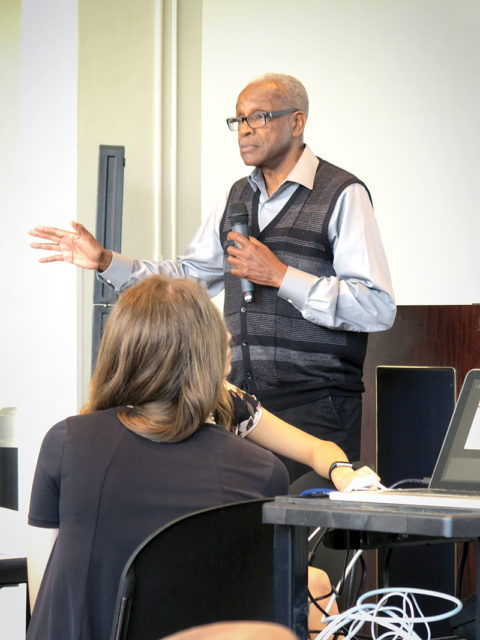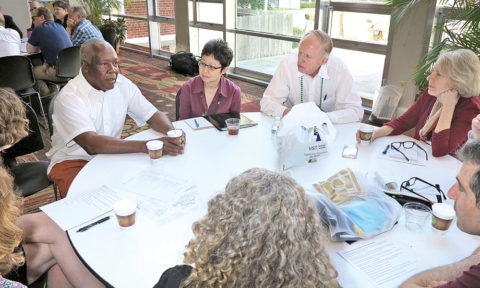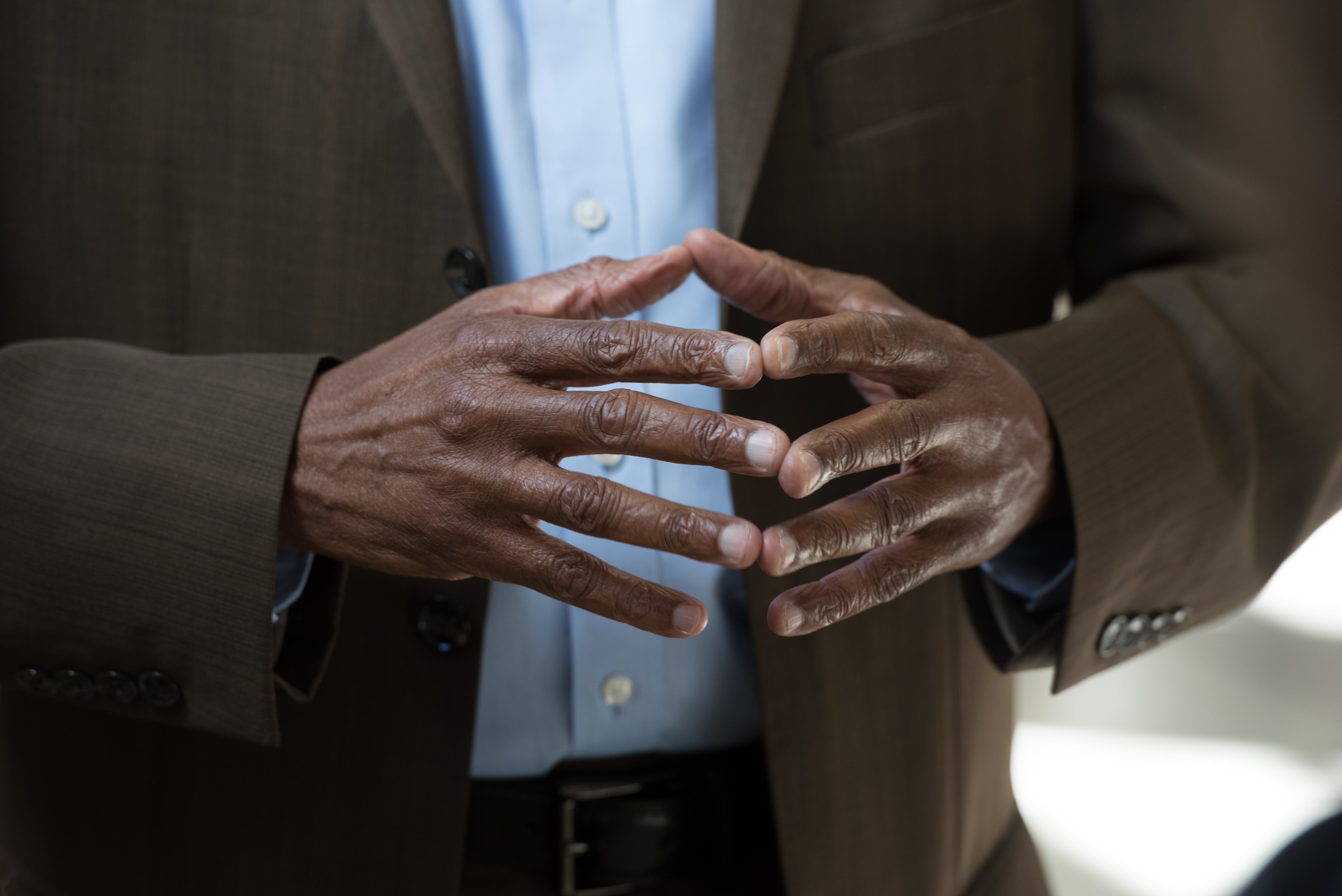March 17, 2017 – Christine Bordelon
“The importance of second chances,” is what Olivia Faracca, a freshman in the honors program at Jesuit-run Canisius College in Buffalo, ascertained from the Ignatian Teach-In on Mass Incarceration held March 10 at Loyola University New Orleans.
Hearing the stories of those who were formerly incarcerated put a face to statistics for Faracca and impacted how she views the criminal justice system and her role in its reform.
Speaker Danielle Metz proved how lives can change when a community works together. Metz was incarcerated for conspiracy to distribute cocaine, but never gave up hope. As a mother of two, who were ages 3 and 7 when she entered jail, she fought for clemency. Others helped facilitate her release, including Syrita Steib-Martin, who introduced her at the seminar.
Quick flood of signatures
Steib-Martin, who was also formerly incarcerated, mentioned her part in getting 63,000 signatures in three weeks on a change.org petition for Metz, and how a letter on Metz’s behalf from Eastern District U.S. Attorney Kenneth Polite helped her cause.
“I was in awe of not only what Syrita went through but also the courage she had to take control of her situation … and fight for a second chance for people who want to change their lives,” Faracca said.

Ronnie Moore speaks at the Teach-In on Mass Incarceration.
Organizers of the teach-in hoped individual stories of how the formerly incarcerated turned their lives around would ignite a call to action from participants – mostly from Jesuit universities – and open their eyes to Catholic Church teachings about mercy, forgiveness and reconciliation.
“You are going to change the world if you change the lives of returning citizens,” said Ronnie Moore, director of Cornerstone Builders, a ministry of Catholic Charities Archdiocese of New Orleans that offers decent job opportunities with just wages and spiritual healing to the formerly incarcerated. Moore said a transformation could begin if they change how they think about the incarcerated, extend mercy and love to formerly incarcerated.
“What are you going to do?” he asked.
In August 2016, after serving 23 years and 8 months, Metz got out. Her children were ages 27 and 30. Steib-Martin spoke of the gratification in helping Metz and mentioned her Operation Restoration that guides the formerly incarcerated to restore their lives upon returning to society.
Shift in dialogue
Sue Weishar, Ph.D., a research fellow of the Jesuit Social Research Institute, who helped organize the teach-in with Cornerstone Builders, said there are different lenses from which to examine mass incarceration, including economics (cities and governments who benefit from tax dollars received from keeping prisoners in jail) and government intervention.
“We believe the best way to look at it is through the lens of faith,” Weishar said, seeing hope as an imperative and the possibility of redemption.
She urged people to use Pope Francis’ eyes of forgiveness and encounter with others to see the death penalty as a denial of hope that causes an immense financial cost and loss of redemption.
“If we believe that humans are made in the image of God, then prison should be used as a last resort, since it denies the dignity of a person and the sanctity of human life,” said Mark Gaunichaux.
“There are alternatives,” he said. “The death penalty diminishes all of us.”
Nicholas Mitchell, Ph.D., also a JSRI research fellow, gave compelling statistics about mass incarceration in Louisiana and said the justice system is not restorative but punitive.
Crowded Louisiana jails
“Louisiana is the most incarcerated place on earth,” he said, with 816 inmates per 100,000 residents as compared to the national state average of 471 per 100,000. It is three times Brazil’s rate, seven times China’s incarceration rate and 10 times Germany’s.
In the United States, incarceration has increased tremendously since the 1980s, even tough crime rates have dropped.
Mandatory minimum sentences for drug use have played a part in the rise in incarceration, Mitchell said, and have negatively affected the black community, due to a disparity of time served between white, Latino and African-American prisoners for the same crime. Mitchell said African Americans are the most incarcerated and gave an example of higher sentences for those who did crack cocaine (used primarily by blacks) versus powdered cocaine (mostly used by rich whites).
Mitchell described the ineffectiveness of mass incarceration in reducing crime rates and how it has caused side effects for African-American black males by giving them less voice in a community and government and reducing their access to social mobility (through restrictions to public housing and higher education for felons once released). He said there are 1.5 million missing black males in the United States, and most are in prison.

Kaven Donald (far left) speaks at a roundtable discussion.
Opening eyes
Speaking at a roundtable discussion on the need for criminal justice reform, Kaven Donald also shared his story of being imprisoned for 32 years at Angola, beginning at age 19. After hearing a visiting prison minister, Donald decided to survive prison and became and became an inmate minister at Angola and saw another way of life. Once released, he worked with Cornerstone Builders and rebuilt his life.
“I feel I need to share this story and try to help other people who are in my place,” Donald said. “If we don’t help others, someone else will surely be there to meet them outside the gate (encouraging them to return to their old lifestyle of crime).”






